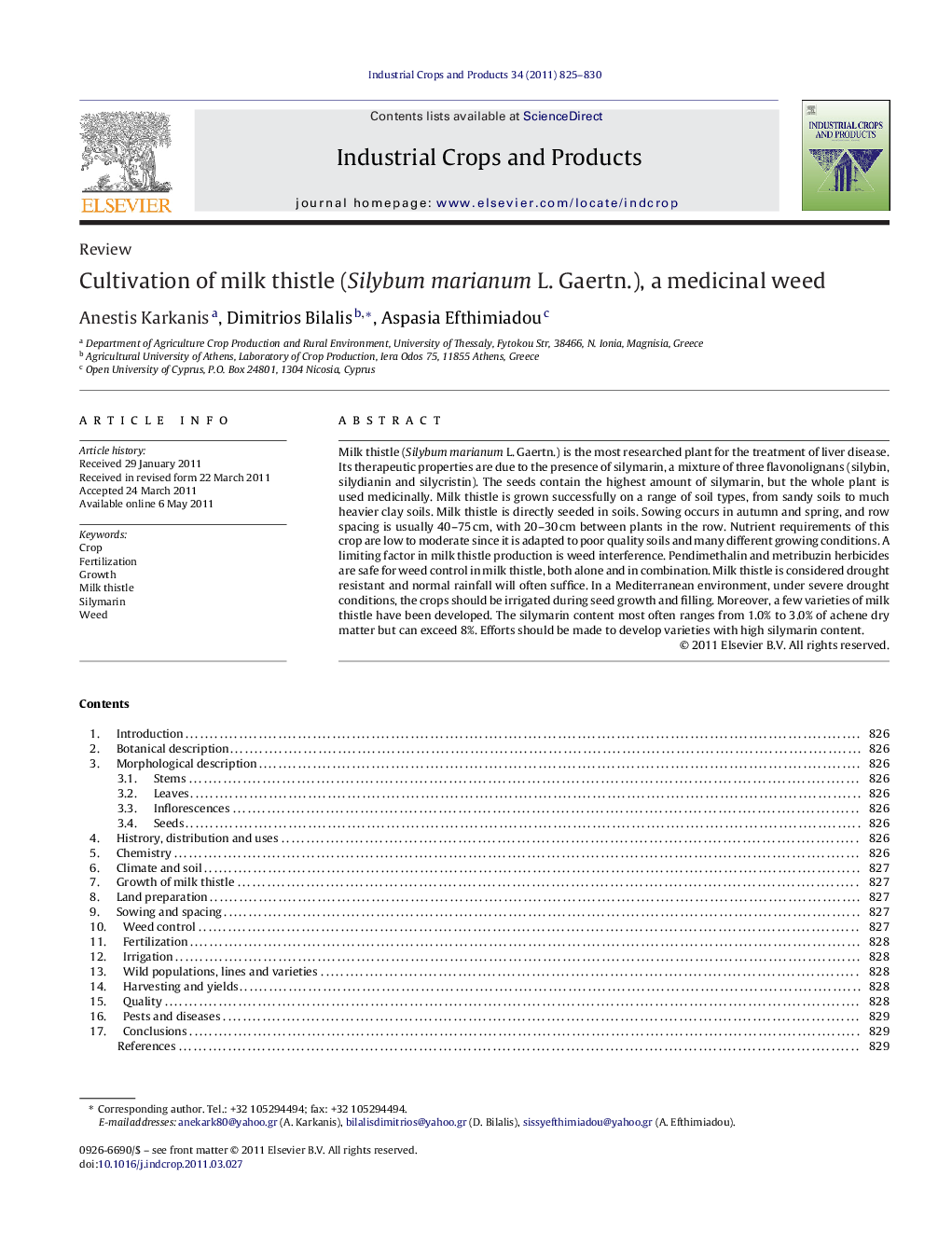| Article ID | Journal | Published Year | Pages | File Type |
|---|---|---|---|---|
| 4514529 | Industrial Crops and Products | 2011 | 6 Pages |
Milk thistle (Silybum marianum L. Gaertn.) is the most researched plant for the treatment of liver disease. Its therapeutic properties are due to the presence of silymarin, a mixture of three flavonolignans (silybin, silydianin and silycristin). The seeds contain the highest amount of silymarin, but the whole plant is used medicinally. Milk thistle is grown successfully on a range of soil types, from sandy soils to much heavier clay soils. Milk thistle is directly seeded in soils. Sowing occurs in autumn and spring, and row spacing is usually 40–75 cm, with 20–30 cm between plants in the row. Nutrient requirements of this crop are low to moderate since it is adapted to poor quality soils and many different growing conditions. A limiting factor in milk thistle production is weed interference. Pendimethalin and metribuzin herbicides are safe for weed control in milk thistle, both alone and in combination. Milk thistle is considered drought resistant and normal rainfall will often suffice. In a Mediterranean environment, under severe drought conditions, the crops should be irrigated during seed growth and filling. Moreover, a few varieties of milk thistle have been developed. The silymarin content most often ranges from 1.0% to 3.0% of achene dry matter but can exceed 8%. Efforts should be made to develop varieties with high silymarin content.
► Milk thistle is the most researched plant for the treatment of liver disease. ► Silymarin is a lipophilic extract from the seeds of milk thistle. ► Nutrient requirements of this crop are low to moderate since it is adapted to poor quality soils. ► Pendimethalin and metribuzin herbicides are safe for weed control in milk thistle.
